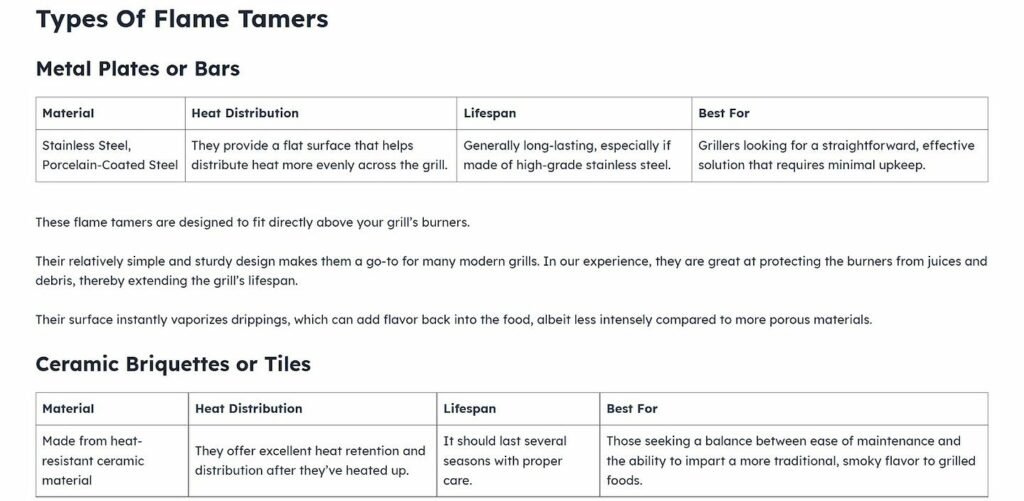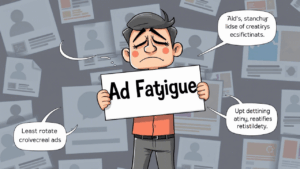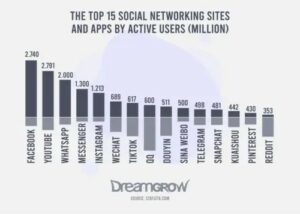AI has been around only for a few years, but it’s already shaking up the content game. With 83% of content marketers now using it to boost their efforts, it’s clear that AI is making a groundbreaking impact.
But the truth is, AI isn’t really a magic wand (at least not yet!). Maybe you’ve tried some of the many writing tools out there and ended up with robotic-sounding posts that miss the mark. Or perhaps you’ve witnessed all the hype but aren’t sure where to begin.
Don’t sweat it — that’s why we’re here to help. In this article, we’ll share six powerful tips and techniques for creating blog posts with AI that will make your content shine. These strategies can help both seasoned pros and curious newbies harness AI’s potential without losing their unique voice.
Let’s discover how AI can save you time, spark creativity, and help you produce high-quality content more efficiently.
1. Crafting a Strong Content Structure
A well-crafted content structure is the backbone of any successful blog post. Neatly organizing your information means that you understand your audience and deliver exactly what they need.
AI excels in this area by analyzing vast amounts of data to identify what your target audience is searching for, the questions they’re asking, and the topics that resonate with them. This helps you create a structure that’s logical and deeply aligned with your audience’s needs.
How to Nail This Technique
- Use AI to analyze your target audience’s online behavior and search patterns.
- Ask the AI to generate a list of potential subheadings based on popular queries.
- Refine the structure by feeding the AI your brand voice and specific goals.
Try prompts like:
- “Generate 5 subheadings for an article about [topic] targeting [audience].”
- “What are the top 3 questions people ask about [topic]?”
Once AI provides you with potential subheadings, refine them to ensure they fit naturally into your article. Aim for a logical flow that guides the reader from one section to the next.
Example
To successfully execute this approach, EXT Cabinets, a company specializing in outdoor kitchens and cabinets, would leverage AI to create a content structure for homeowners.
Let’s take a look at one of their blog posts — “What Are Flame Tamers On A Gas Grill?”.
Here, AI can help identify key questions and concerns, which will result in subheadings that address topics like types, functionality, and benefits.
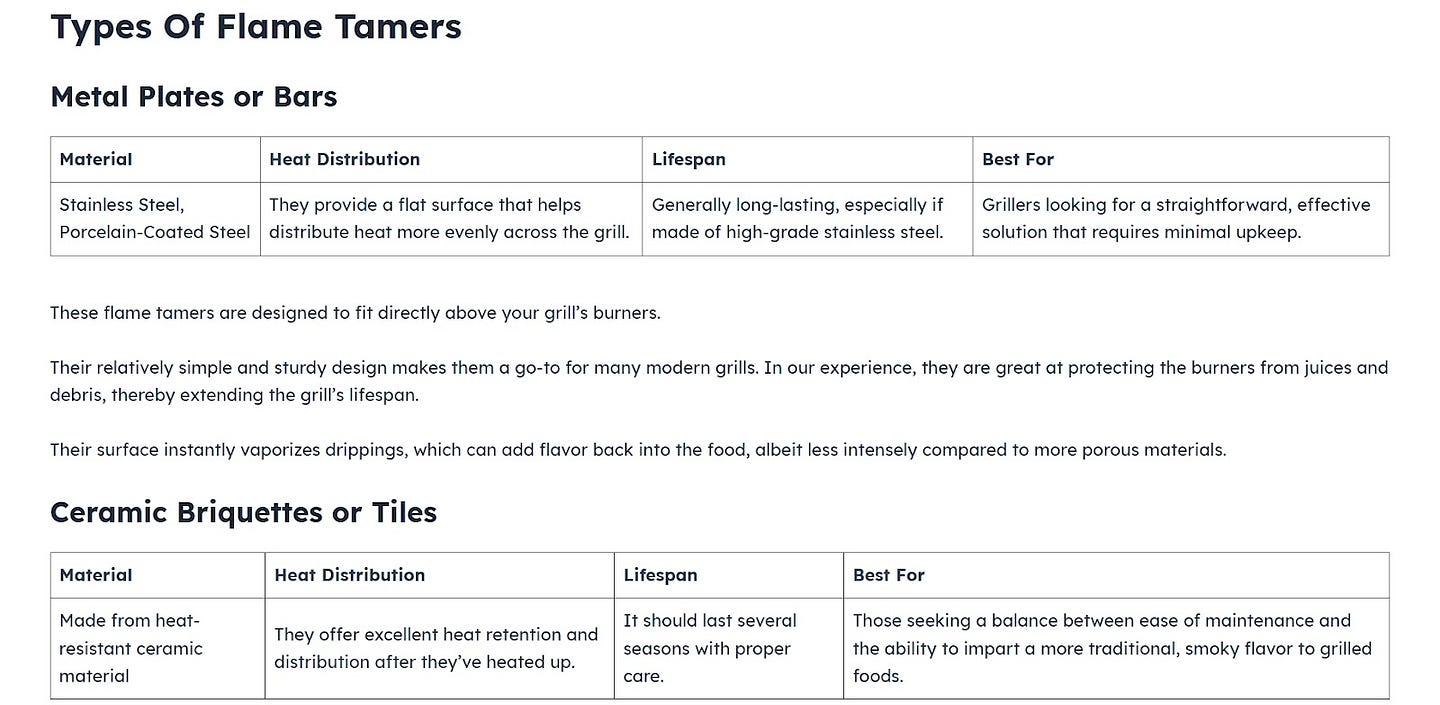
This way, the article’s AI-assisted structure will ensure the content is comprehensive, easy to navigate, and optimized for both length and readability.
Watch Out For
While AI is powerful, it’s not without limitations. Be aware that:
- AI might miss nuanced cultural or regional preferences.
- It may suggest generic structures if not given enough specific context.
- AI’s suggestions are based on existing data, which might not capture emerging trends.
Pro Tips
Always review and adjust AI-generated structures to ensure they align with your brand voice and specific audience needs.
And remember: AI is a tool to enhance your content strategy, not replace human creativity and expertise. Use it wisely to create structures that serve both your audience and your marketing goals.
2. Ensuring Factual Accuracy
Checking for factual correctness with AI is crucial for maintaining credibility and trust with your audience. This is especially important when your content covers technical or specialized topics.
This strategy excels at quickly sifting through vast amounts of information, cross-referencing multiple sources, and flagging potential inaccuracies. It’s particularly effective for content that relies heavily on data, statistics, or scientific information.
How to Nail This Technique
- Input your content into an AI fact-checking tool like Wisecube or Factinsect.
- Ask the AI to compare your statements against reputable sources.
- Review its findings and verify any flagged information.
- Use the AI to suggest up-to-date statistics or facts to enhance your content.
Try prompts like:
- “Verify the accuracy of these statements: [list key facts from your content].”
- “Find recent studies or data that support or contradict this claim: [specific claim].”
Example
Pinch, a med spa service provider, can use AI to successfully apply this tactic to their blog post “How Many Units of Botox for a Lip Flip?”
Given the medical nature of their content, accuracy is paramount. So, the brand can utilize AI to scrutinize each claim in the article, comparing it against various resources and official guidelines from regulatory bodies.
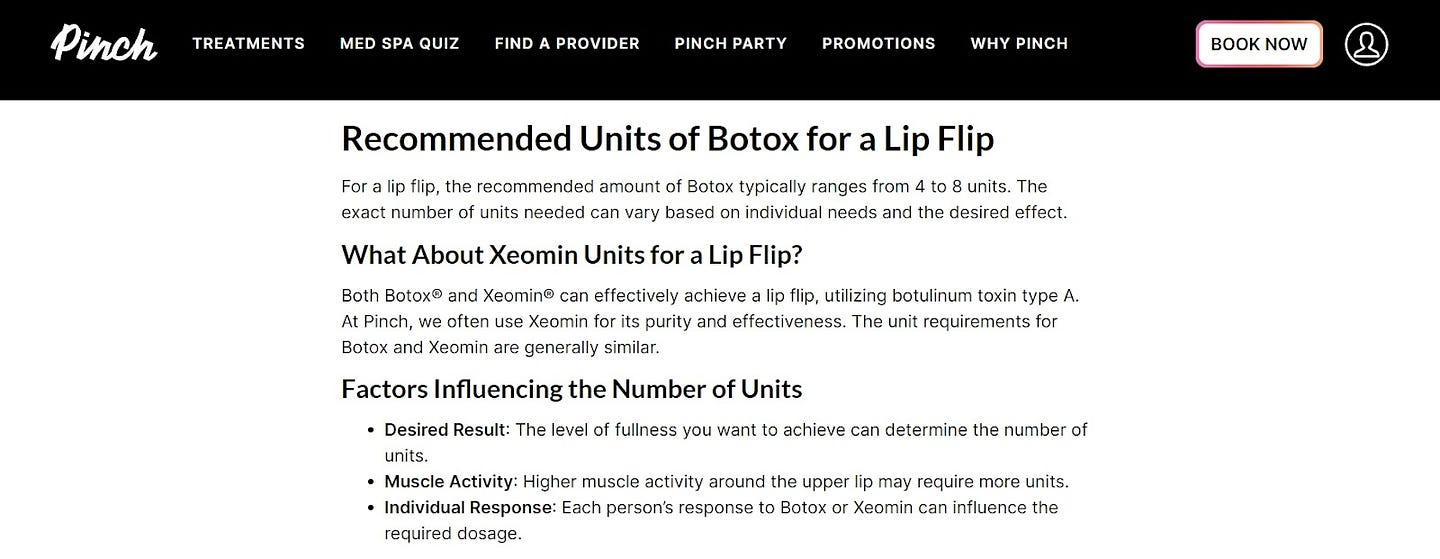
This process ensures that all information about Botox dosages, procedure details, and potential side effects is current and factually correct.
Watch Out For
While AI is a great tool for fact-checking, it’s important to be aware of its limitations:
- AI might not always distinguish between credible and non-credible sources without proper training.
- It may struggle with very recent developments that haven’t been widely documented yet.
- It can’t replace human expertise, especially in specialized fields like medicine.
Pro Tips
Always double-check AI findings, particularly for sensitive or specialized topics. Use AI as a starting point for fact-checking but rely on human expertise for final verification, especially in fields where misinformation can have serious consequences.
While AI can significantly streamline the fact-checking process, the ultimate responsibility for accuracy lies with the content creator.
3. Maintaining a Consistent Tone Across Your Blog
Consistency in tone enhances your brand identity and ensures that your message is delivered in a way that aligns with your readers’ expectations. That’s why maintaining a consistent tone across your blog is essential for building a recognizable brand voice that resonates with your audience.
AI is particularly effective in helping marketers assess existing articles, identify inconsistencies in style and tone, and provide feedback on what can be improved. This ensures that all content reflects the same voice, making your blog more cohesive and professional.
How to Nail This Technique
- Feed your brand guidelines and tone preferences into an AI tool such as ChatGPT or Claude.
- Have it analyze your existing content for tone and style.
- Review its suggestions for improvements and apply them consistently.
- Use it to check new content against your established tone before publishing.
Try prompts like:
- “Analyze this article for tone consistency with our brand voice: [attach article].”
- “Suggest rephrasing for these sentences to match our friendly, informative tone: [list sentences].”
Example
Let’s see how Main Clinic Supply, a supplier of medical oxygen equipment, can use this tactic for their “How to Charge Your Inogen One G5” blog post.
Their target audience is primarily elderly individuals using oxygen equipment. So, the brand can use AI to ensure the tone is consistently clear, patient, and reassuring throughout the article.
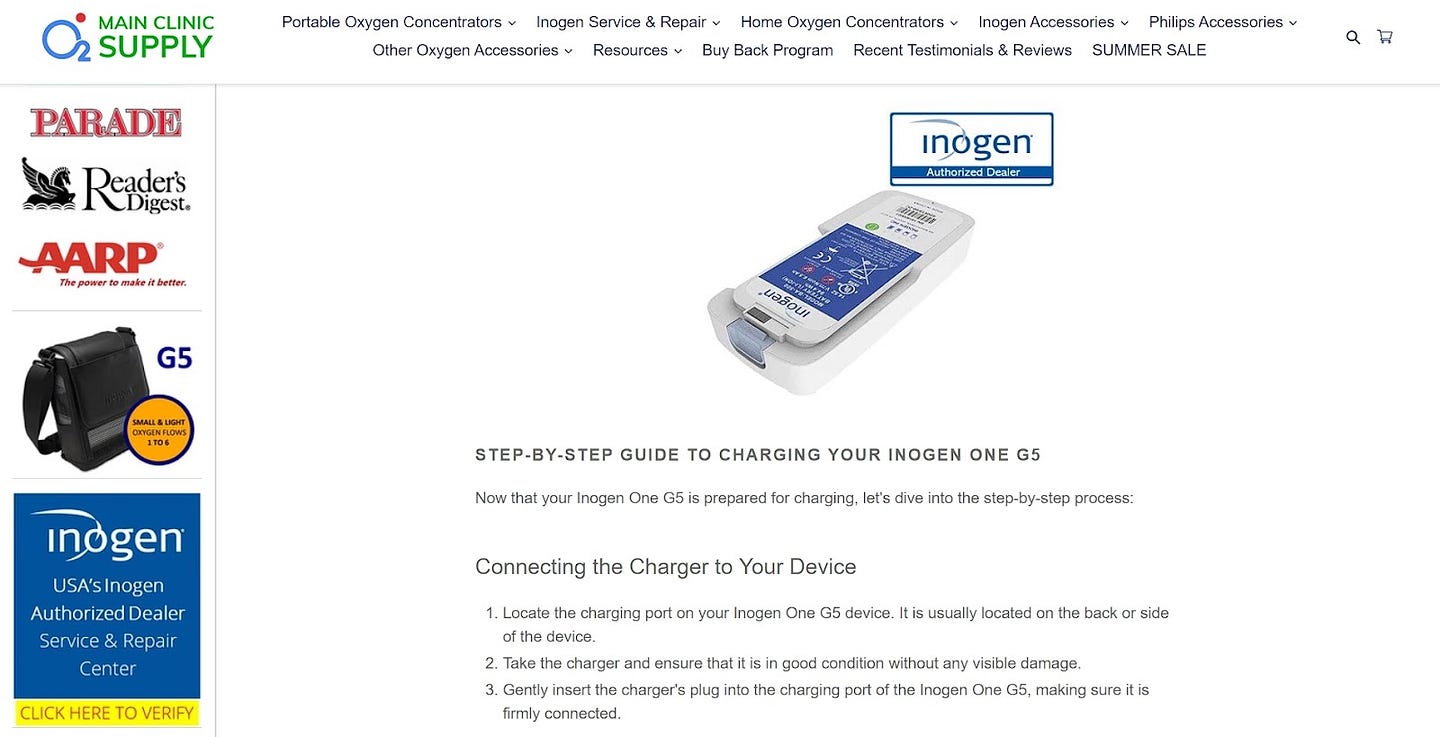
The AI will suggest simplifying complex terms, using more conversational language, and adding empathetic touches to make the content more accessible and comforting for older readers.
Watch Out For
AI can really help maintain tone consistency. But sometimes, it’s not the most reliable option:
- AI might not fully grasp subtle emotional nuances that human writers instinctively understand.
- It may struggle with brand-specific humor or very unique voice characteristics.
- Its suggestions might sometimes feel formulaic if not carefully reviewed.
Pro Tips
Always have a human editor review AI-suggested changes to ensure they truly align with your brand voice.
Remember that while AI can provide valuable insights and suggestions, it shouldn’t replace the human touch entirely.
Your brand’s unique personality and connection with your audience should always be at the forefront, with AI serving as a helpful tool rather than the sole decision-maker in tone and style choices.
4. Optimizing Your Content for Search Engines
Optimizing your content for search engines is a must if you want to drive traffic to your website. With the #1 result in Google capturing approximately 28% of all clicks, it’s clear that ranking high in search results can make or break your content’s visibility.
AI can significantly enhance your SEO efforts by helping you identify the right keywords, optimize your content structure, and ensure your posts align with what your audience is searching for.
How to Nail This Technique
- Use AI-powered tools like Surfer or Alli AI to analyze top-ranking content for your target keywords.
- Get AI-generated suggestions for optimizing your title, meta description, and headers.
- Ask the AI to identify relevant long-tail keywords to sprinkle throughout your content.
- Use it to check your content’s readability and suggest improvements.
Try prompts like:
- “Analyze this content and suggest SEO improvements: [paste content].”
- “Generate 5 SEO-optimized title options for an article about [topic].”
Example
Here’s how Escort Radar, a company specializing in radar detectors and dash cams, can do this in their blog post “Do Radar Detectors Work?”:
AI can help them strategically place keywords, craft questions that nail search intent, and optimize word count. It can also help structure the content with reader-friendly subheadings, short paragraphs, and concise sentences.
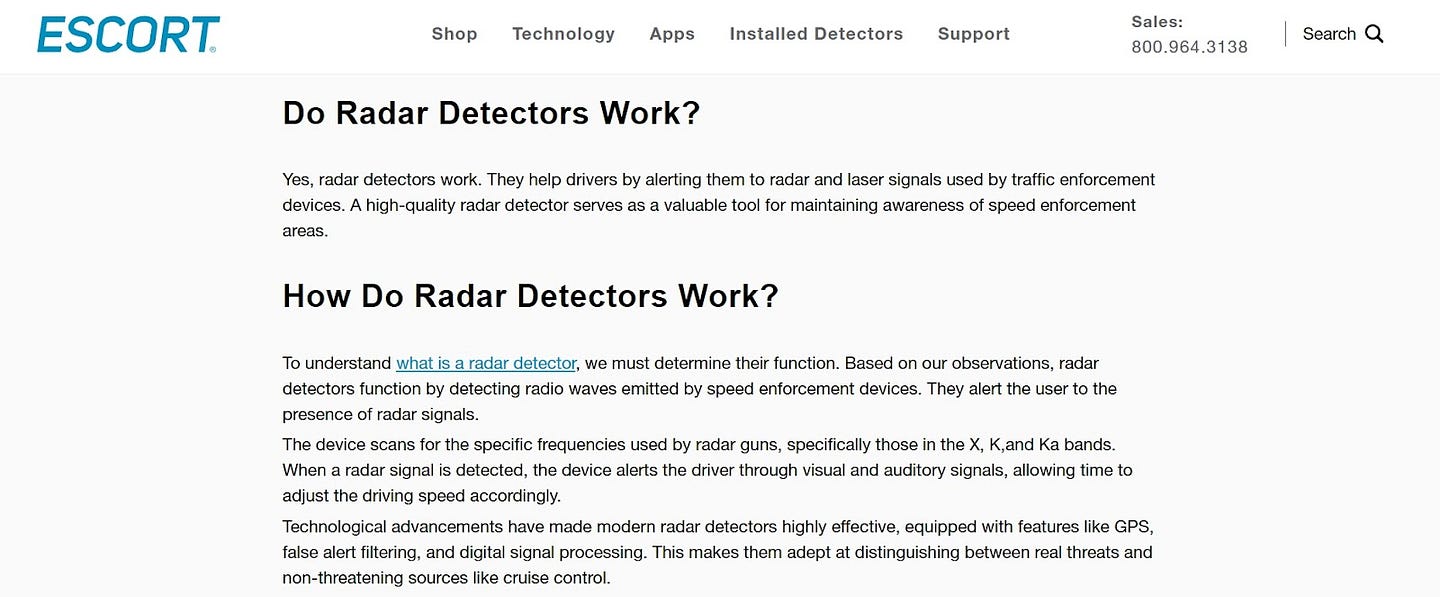
The result will be a highly optimized, easily digestible piece that search engines and readers alike could appreciate.
Watch Out For
AI isn’t always suitable for SEO purposes:
- AI might suggest over-optimization, which can actually hurt your rankings.
- It may not fully grasp the nuances of your specific industry or audience.
- AI can’t replace human creativity in crafting truly engaging content.
Pro Tips
Always review and refine AI-generated SEO suggestions.
While AI can crunch numbers and analyze patterns, it’s your unique insights and brand voice that will truly make your content stand out.
So, use AI as a powerful sidekick in your SEO efforts, but don’t let it take the wheel completely.
5. Proofreading and Editing Your Content
Proofreading and editing content with AI is like having a tireless, eagle-eyed assistant who never misses a beat.
This strategy excels at catching those pesky errors that can slip past even the most careful human editors. From grammar gaffes to awkward phrasing, AI can spot and suggest fixes for a wide range of issues, ensuring your content is polished to perfection.
By using AI to fine-tune your content, you can enhance its readability, coherence, and overall quality, making a stronger impact on your audience.
How to Nail This Technique
- Run your draft through an AI editing tool like ChatGPT or BrandWell for initial suggestions.
- Review the flagged issues and accept or reject changes as needed.
- Ask the AI to check for consistency in style, tone, and terminology.
- Use it to analyze sentence and paragraph structure for optimal readability.
Try prompts like:
- “Proofread this content and suggest improvements for clarity and flow: [paste content].”
- “Identify any inconsistencies in terminology or style in this piece: [paste content].”
Example
AI could improve a blog post like “Is Porcelain Sustainable?” by Ovaeda, a company specializing in products and materials for outdoor living spaces.
The company can feed the content to an AI and instruct it with the suggested prompts. The result will be a piece that’s free of grammatical and semantic errors and has an ideal sentence and paragraph structure.

Additionally, AI can help create a smooth, engaging read that keeps visitors on the page and reinforces Ovaeda’s expertise in outdoor living solutions.
Watch Out For
Ai can be an amazing proofreading ally, but keep these limitations in mind:
- AI might miss context-dependent errors or nuances in meaning.
- It may suggest changes that alter your intended tone or message.
- It can’t fully grasp creative language use or intentional rule-breaking for effect.
Pro Tips
Always give your AI-edited content a final human once-over. While AI can catch many errors and suggest improvements, it shouldn’t be your only line of defense.
Your unique voice and expertise are vital in ensuring the content reads well and resonates with your audience.
So, use AI as a tool in your editing arsenal, but don’t let it override your judgment or creativity.
6. Generating Eye-Catching Visuals for Your Content
Visuals play an essential role in capturing and retaining your audience’s attention. Studies show that articles with images receive 94% more views than those without, highlighting the importance of incorporating the right visuals into your content.
Visuals grab attention, convey information quickly, and make your content infinitely more shareable.
AI can be a game-changer in this area. It can help you generate eye-catching visuals tailored to your content, making your posts more engaging and impactful.
How to Nail This Technique
- Use AI image generators like Dall-E or Midjourney to create custom visuals that align with your content.
- Ask the AI to suggest optimal image placements within your article.
- Use it to create infographics that summarize key points visually.
- Generate multiple options and A/B test them for best performance.
Try prompts like:
- “Create an image depicting [specific scene or concept] for an article about [topic].”
- “Generate an infographic summarizing these key points: [list points].”
Example
DialMyCalls, a mass text messaging service, has a guide on emergency SMS alerts that could immensely benefit from the power of an AI image generator.
They can use AI to create vivid images depicting emergency situations where their service could be paramount. These AI-generated images will bring their scenarios to life, making the content more engaging and relatable.
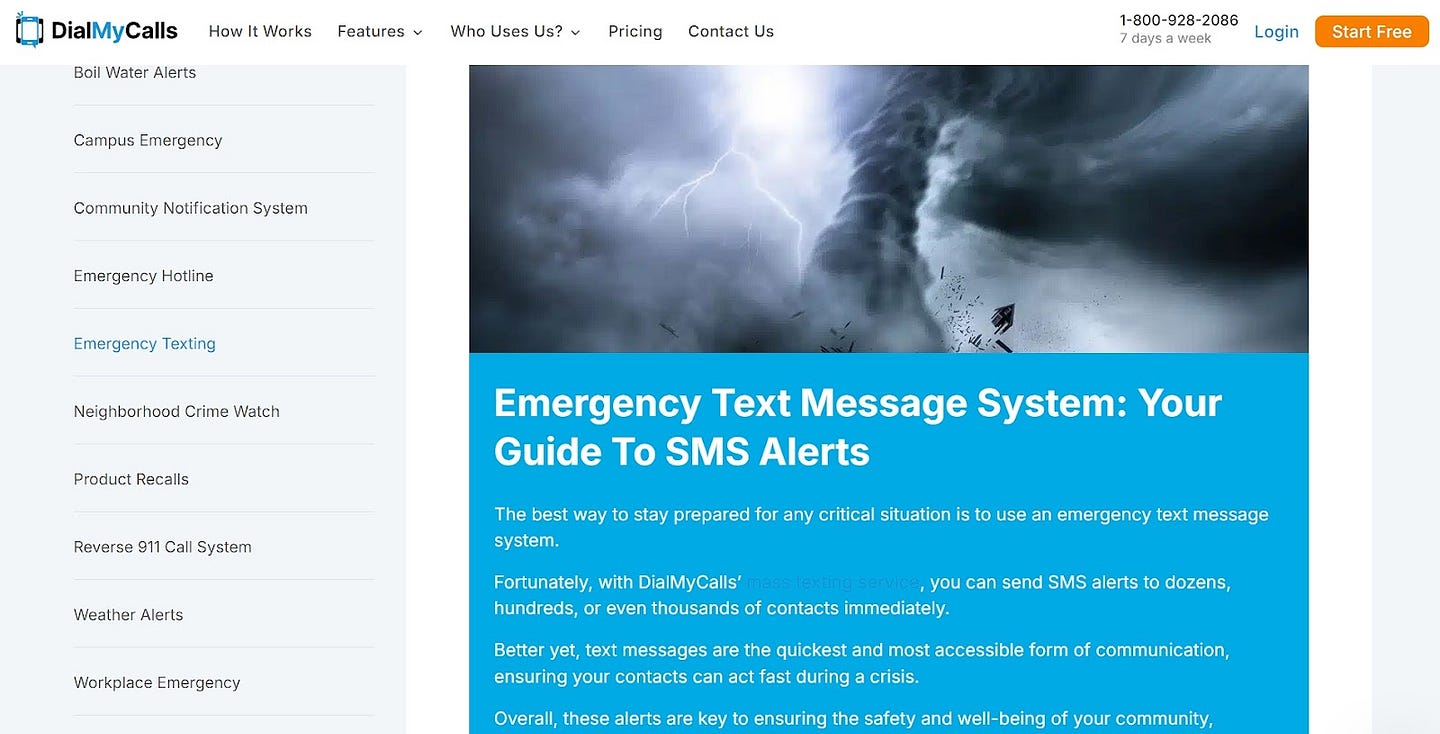
This will result in a guide that informs and visually demonstrates the value of their service in critical situations.
Watch Out For
However, AI-generated visuals aren’t without pitfalls:
- AI might create images that look generic or lack brand-specific elements.
- There could be ethical concerns about using AI-generated images without disclosure.
- AI may struggle with complex or highly specific visual requests.
Pro Tips
Always review AI-generated visuals for accuracy and brand alignment. While AI can quickly produce a variety of images, it’s important to ensure they truly enhance your message and meet ethical standards.
Use AI as a creative springboard, but don’t hesitate to add human touches or opt for authentic photos when needed. The goal is to complement your content with visuals that resonate, whether they’re AI-assisted or not.
Final Thoughts
These six tactics can help you craft content that’s not just good but downright irresistible. But here’s the real question: how will you use these AI-powered strategies to push your creative boundaries?
AI is definitely reshaping content creation, and it’s still only in its initial stages. However, no matter how developed it becomes, it’s never about replacing your skills but about amplifying them.
The future of content is a collaboration between human ingenuity and AI assistance. So, why not start experimenting today? Your next breakthrough article might be just a prompt away.
